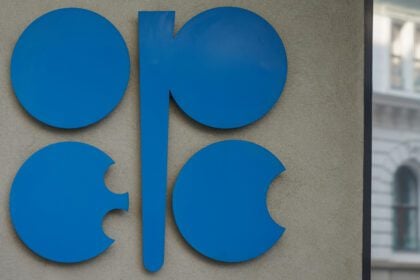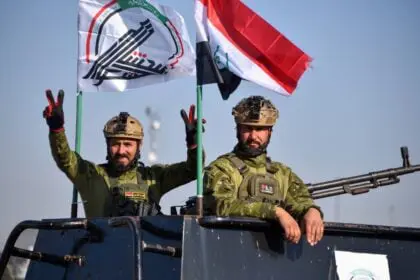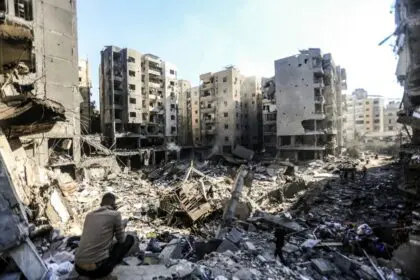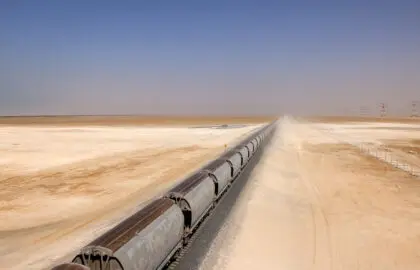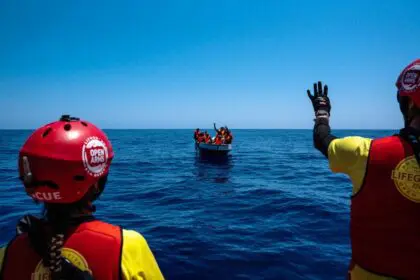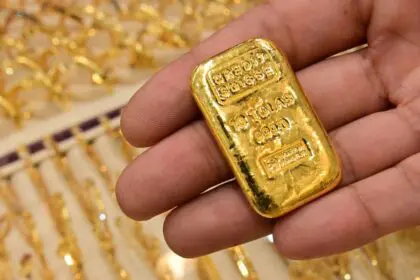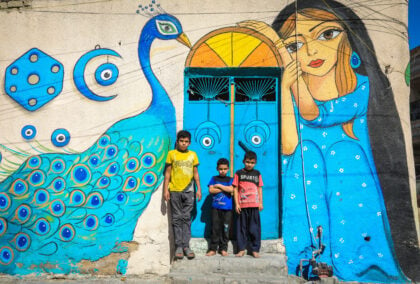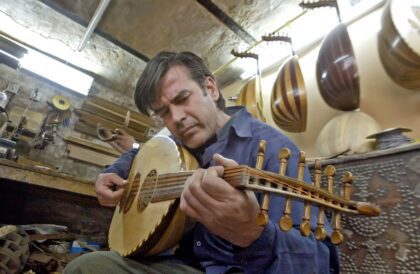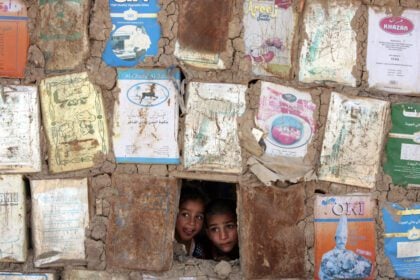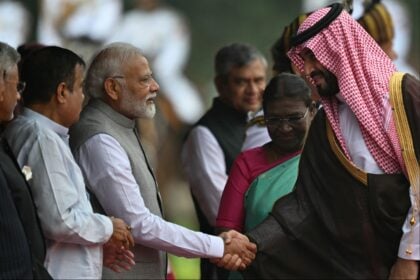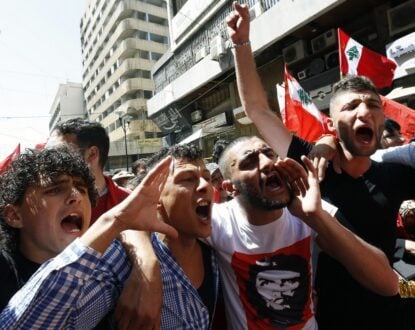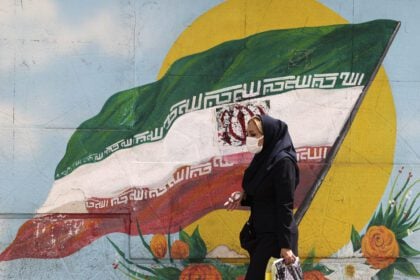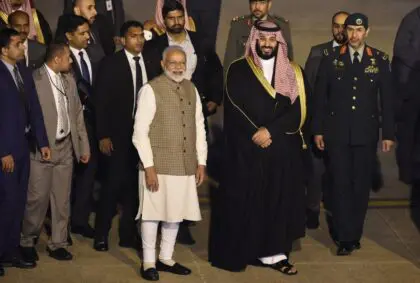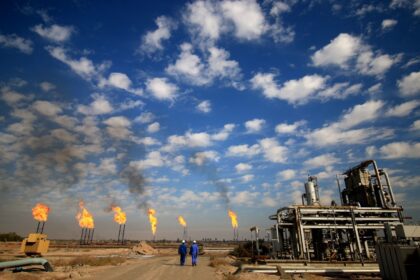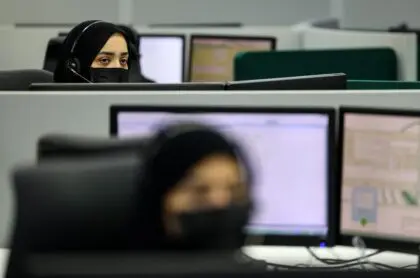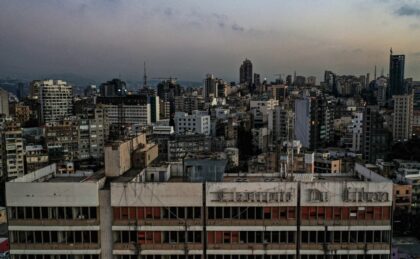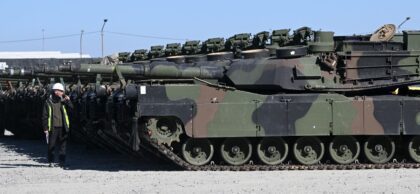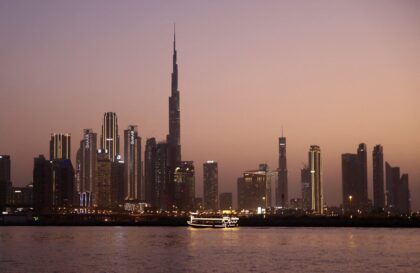
Introduction
Iraq is one of the most oil-dependent countries globally; over the course of the years 2010-2020, oil revenues accounted for more than 99 percent of its exports, 85 percent of its government budget, and 42 per cent of its GDP. This excessive dependence on oil exposed the country to macroeconomic volatility, while budget gridlock limited spending space in the public finances and limited any opportunity for counter-cyclical policies, according to a World Bank report in October 2021.
By the beginning of 2021, the unemployment rate in Iraq – with an estimated population of 40.2 million – was more than ten percentage points higher than before the outbreak of the Covid-19 pandemic: 12.7per cent. Unemployment remained high until late 2021 among displaced persons, returnees, women seeking employment, entrepreneurs, and workers in the informal economy, as before the pandemic.
Nevertheless, the Iraqi economy has gradually recovered from the shock of declining oil prices and the Covid-19 outbreak in 2020. In the first half of 2021, GDP grew by 0.9per cent (on an annual basis). The non-oil economy grew by more than 21 per cent in the first half of 2021 (annually) thanks to solid performance in the service sectors, where the containment of the coronavirus was eased, thanks to the expansion of the vaccination campaign. This recovery exceeded the slowdown in the oil sector, with Iraq in line with its share of OPEC and overseas producers in early 2021.
While the economic situation in Iraq has gradually improved in parallel with the recovery of international oil markets, this recovery remains fraught with major risks posed by structural imbalances:
– The constraints in the management of public investments that have affected the level of public service delivery,
– Slow settlement of arrears (particularly those related to wages of public sector workers),
– Limits of large credit facilities for the banking sector of state-owned banks and the Central Bank granted to the public sector
These vulnerabilities are exacerbated by the unstable political situation, weak healthcare system, and widespread corruption that continuously causes civil unrest.
Fluctuations in oil prices and the Covid-19 pandemic have amplified Iraq’s economic problems, reflecting two years of steady recovery. These double shocks deepened the existing economic and social fragility and added a new justification for the popular discontent that preceded the Corona pandemic.
Budget revenues in 2020 fell by more than 9 percentage points to 32 per cent of GDP, with a sharp contraction in oil revenues. To deal with this situation, the Iraqi government reduced non-binding expenditures, including a reduction in public investment by 87 per cent and rescheduling part of the local debt.
The authorities chose to devalue the Iraqi dinar by 18.5 per cent against the US dollar in December 2020, increasing oil revenues. Despite these actions, the balance of public finances still accounts for 6.4 per cent of the GDP deficit. Financing was secured primarily through the central bank and state-owned banks.
Acknowledging the gravity of the crisis, the Iraqi government has devised a national reform plan (White Paper) that sets out a bold blueprint for structural reforms. It aims to achieve sustainable medium-term growth through economic diversification, enhanced private sector growth, and private sector employment creation. The government also developed a framework for the implementation and governance of the White Paper. A detailed reform matrix was proposed and a Higher Council for Reform under the Prime Minister to monitor the tasks of implementing reform was launched.
Measures were already implemented, starting with the reforms adopted in the 2021 Budget Act and other areas, including the business environment and the financial sector. However, the World Bank considered that the ultimate success of the reforms depended on political will and public support for implementing the proposed measures. The country’s long-standing vulnerability trap is expected to recover gradually against the backdrop of rising oil prices and increasing OPEC production shares. The recovery in oil prices provides an opportunity to advance reforms.
In terms of increasing economic opportunities for women in Iraq, the World Bank recommended that Iraq increase gender equality in the labour market. Women’s participation in the labour force is essential for achieving the economic transformation described in the government’s White Paper.
Gross Domestic Product
The absence of fiscal space has limited the ability of the government to provide incentives to the Iraqi economy, which relies heavily on oil revenues for its growth and financial profit.
As a result, the country suffered the largest contraction since 2003, with GDP contracting by 10.4 per cent in 2020, against the backdrop of the OPEC Oil Production Reduction Agreement and the grim shadows cast by the Covid-19 pandemic on non-oil sectors, including the decline of religious tourism services following border restrictions. Hence, the GDP per capita, a measure of individual well-being, is estimated to have shrunk by 15 per cent in 2020. According to the World Bank, it decreased much more than in other countries in the region with similar income levels as Iraq has.
Economic downturn also affected the well-being of Iraqi citizens, especially among workers in the informal sector and entrepreneurial sector. Unemployment continued to reach 10 percentage points higher than before the pandemic. Limited financial space hampered the flow of financial support transfers, including ration, with the proportion of families receiving such support falling by more than 8 percentage points. The loss of household income and social support has increased vulnerability to food insecurity.
The oil crisis affected the fiscal balance in Iraq, which forced the government to reduce non-binding expenditures and accumulate arrears.
Foreign Trade
The value of Iraq’s commodity exports in 2020 amounted to approximately Iraqi Dinar (IQD) 4.6 trillion, equivalent to USD 3.8 billion, an increase of 19.9 per cent compared to 2019. It reached 3.9 trillion dinars, equivalent to 3.3 billion dollars, a compound growth rate of 155.7 per cent between 2016 and 2020.
According to the Central Bureau of Statistics, February witnessed the highest percentage of commodity exports (31.4 per cent) for 2020, at 1,455.5 billion dinars, equivalent to $1,231.4 million, and June the lowest (0.1 per cent). It amounted to 2.3 billion dinars, equivalent to 1.9 million dollars.
The first half accounted for the highest proportion of commodity exports (51.9 per cent) for 2020, at 2,400.6 billion dinars, equivalent to US $2,031.0 million.
Asian countries accounted for the highest proportion (60.4 per cent) of total commodity exports for 2020. India ranked highest (46.9 per cent), followed by the United Arab Emirates (39.0 per cent).
Automobile gasoline exports (94.5 per cent) accounted for total commodity exports for 2020, followed by full NFTA light oil, light oil preparations, and 24.9 per cent of base lipids (6.5 per cent).
The value of oil derivatives exports was IQD 2.8 trillion for 2020, equivalent to $2.4 billion, an increase of 82.4 per cent compared to 2019. Exports of oil derivatives amounted to IQD 1.5 trillion, or $1.3 billion, at a compound growth rate of 150.3 per cent between 2016 and 2020.
The total export of crude oil, products, and other goods () in 2020 amounted to IQD 57.1 trillion, equivalent to approximately $47.9 billion, down from IQD 98.2 trillion in 2019 ($83.1 billion) at a compound growth rate of 2.5 per cent between 2016 and 2020.
The value of crude oil exports in 2020 amounted to IQD 49.7 trillion ($41.8 million), a decrease of 46.5 per cent compared to 2019, when it amounted to IQD 92.8 trillion ($78.5 billion) and with a combined growth rate of -0.9per cent between 2016 and 2020.
Total imports for 2020 of goods and petroleum products amounted to IQD 18.4 trillion, equivalent to $15.4 billion, a decrease of 25.9 per cent from 2019, when these exports were worth $20.9 billion, with a compound growth rate of -35.2 per cent compared to 2018.
Total imports of non-oil commodities amounted to IQD 16.5 trillion ($13.8 billion). A decrease of 23.2 per cent over 2019; It reached $18.1 billion, a compound growth rate (-36.1per cent) from 2018. Total imports of petroleum products amounted to IQD 1.9 trillion, equivalent to USD 1.6 billion, down 43.3per cent from 2019; it reached $2.8 billion, and a compound growth rate of -25.2per cent for 2018.
November was the highest percentage of total imports for 2020 (16.3per cent), at $2.5 billion; January was the highest percentage of imports of petroleum products (19.3per cent), at US $301.1 million. November was the highest percentage of non-oil commodity imports (17.2per cent) at US $2.4 billion.
Iraq is the 39th trading partner of the European Union, accounting for 0.3 per cent of the European Union’s total merchandise trade with the world in 2020.
The European Union is Iraq’s fourth-largest trading partner, accounting for 12.1 per cent of Iraq’s total merchandise trade with the world in 2020. 11.3 per cent of Iraq’s imports came from the European Union, and 12.7 per cent of Iraq’s exports came from the European Union. The total merchandise trade between the European Union and Iraq in 2020 was €10.8 billion.
The value of EU imports was 7.3 billion euros, mainly consisting of fuel and mining products (7.25 billion euros, 99.3per cent). The total export of the European Union was €3.5 billion, more diversified than imports and controlled by machinery and transport equipment (€1.4 billion, 40.0per cent), followed by agriculture and raw materials (€0.7 billion, 20.0per cent) and chemicals (€0.7 billion, 20.0per cent).
| Foreign Trade Indicators | 2019 | 2020 | Change ± |
| Exports (billion dollars) | 83.10 | 47.90 | -35.20 |
| Imports (billion dollars) | 20.90 | 15.40 | -5.5 |
| Trade balance surplus (billion dollars) | 62.20 | 32.50 | -29.70 |
| The coverage ratio of merchandise exports to merchandise imports (%) | 397.61 | 311.04 | -86.57 |
Source : Central Bureau of Statistics.
Industry
In 2020, 719 large industrial enterprises were operating in Iraq, broken down by main economic activity, into extractive (excluding oil) and manufacturing activities. The results showed that the industry of other non-metallic mineral products ranked first in the number of enterprises in manufacturing activities, which accounted for 50 per cent, followed by the food industry with 30 per cent.
The rest of the activities were 20 per cent of all different industries. According to the Central Bureau of Statistics, by comparing the number of enterprises in operation for 2020 with 2019, there has been a 7.3 per cent increase because of the private sector’s growth.
The total number of industrial workers in 2020 was approximately 126,790, spread across various industries; Of these, 473 are unpaid workers who are business owners or their relatives in the private sector.
The activities of coke (fuel) and refined petroleum products contributed 24 per cent to the labour force, followed by the production of other metallic minerals at 20.1 per cent. Although there has been an increase in the number of enterprises, there has been a decrease of 6.5 per cent in the number of workers compared to 2019, due to the new retirement law that reduced the number of workers in the public and government sectors.
In addition, the negative impact of the Corona pandemic on the economy also affected industrial activity. This led to a decline in wages in 2020, which amounted to IQD 1.408 trillion, compared to IQD 1.554 trillion in 2019, a decrease of 9.4 per cent.
Despite an increase in the number of enterprises in 2020, production fell to IQD 6.717 trillion, compared to IQD 7.316 trillion in 2019, a decrease of 8.2 per cent, owing to the described harsh conditions caused by the Covid-19 virus and the resulting suspension of the facilities for some months, as well as the decline in production of raw materials, and other inputs. Production reached 3.476 trillion dinars, down 9.1 per cent from 2019.
Poverty
A report issued by the United Nations in the spring of 2021 suggested a rise in the poverty rate of between 7 per cent and 14 per cent, as the Iraqi government decided to reduce the dinar’s value, which increased the food prices.
The report, which was prepared jointly by the Food and Agriculture Organization (FAO), the World Food Programme, and the World Bank, said that the decision to devalue the local currency would lead to a short-term increase in the number of poor individuals in the country, estimated to be between 2.7 million and 5.5 million Iraqis. The report indicated that these numbers would add to the approximately 6.9 million Iraqis already in poor economic situations before the Covid-19 pandemic.
According to the report, the Iraqi government faces “difficult tasks in trying to contain the coronavirus (Covid-19), protect people’s health, and restart the ailing economy.” The report said that the most vulnerable groups, including internally displaced persons, refugees, and returnees from camps, have been particularly affected by the crisis. More than a third of Syrian refugees use passive coping strategies, such as relying on lower-cost food, borrowing food, or borrowing money to buy food. This is higher than 29 per cent and 21 per cent among displaced persons and returnees, respectively, or 8 per cent nationally.
According to the World Bank, the poverty rate in Iraq doubled in 2020, with 40 per cent of the population now considered poor.
In December 2020, the Central Bank raised the local currency exchange rate against the dollar from 1.190 dinars to 1.450 dinars. As a result, agri-food and wholesalers increased their prices by 20 per cent and sometimes more.
Agriculture

The total arable land area in Iraq in 2020 was 18.14 million dunams, and the area with the highest proportion of arable area in Nineveh governorate, where 30.5 per cent is fit for agriculture. The total area under cultivation in Iraq was 15.14 million dunams; The Nineveh governorate holds 42.7 per cent of all the land currently under cultivation in Iraq.
The total number of workers working in Iraq’s agriculture in 2020 was 317,340. The highest proportion of agricultural workers was in Salah al-Din province, at 18 per cent of the total agricultural workers in Iraq.
The total area of orchards in Iraq in 2020 was 1.444 million dunams. The province of Anbar had the largest area of orchards, at 34.1 per cent of the total area of orchards in the country.
Greenhouses
The total number of greenhouses in Iraq during 2020 was 63,413, where Babylon province housed the most greenhouses (29,668), accounting for 46.8 per cent of the total number. As for the irrigation methods used, 98.8 per cent of houses are irrigated by drip.
According to World Bank data, the value of Iraq’s agriculture sector as a percentage of GDP was 6.07 per cent in 2020, compared to 3.33 per cent in 2019.
| wdt_ID | Province | Cultivable area/acres | Valid area percentage | Cultivated area/acres | Percentage of cultivated area |
|---|---|---|---|---|---|
| 1 | Nineveh | 5539200 | 30.5 | 6461476 | 42.7 |
| 2 | Kirkuk | 1883040 | 10.4 | 793790 | 5.2 |
| 3 | Saladin | 1418080 | 7.8 | 835981 | 5.5 |
| 4 | Diyala | 2164000 | 11.9 | 799936 | 5.3 |
| 5 | Al Anbar | 417640 | 2.3 | 664840 | 4.4 |
| 6 | Baghdad | 41920 | 0.2 | 401193 | 2.6 |
| 7 | Babel | 1236000 | 6.8 | 569376 | 3.8 |
| 8 | Karbala | 74880 | 0.4 | 171175 | 1.1 |
| 9 | Najaf | 169160 | 0.9 | 512319 | 3.4 |
| 10 | Wasit | 1508840 | 8.3 | 1169000 | 7.7 |
| 11 | Al-Qādisiyyah | 988000 | 5.4 | 982352 | 6.5 |
| 12 | Al Muthanna | 288520 | 1.6 | 458038 | 3 |
| 13 | Dhi Qar | 1019320 | 5.6 | 661620 | 4.4 |
| 14 | Maysan | 1184520 | 6.5 | 589156 | 3.9 |
| 15 | Basrah | 209680 | 1.2 | 71451 | 0.5 |
| 16 | All provinces | 18142800 | 100 | 15141703 | 100 |
Source: Ministry of Agriculture.
Livestock
Iraq possesses many kinds of cattle, such as sheep, goats, cows, and buffalo, often found in fertile pastures. Livestock in Iraq suffers from a number of problems as a result of neglect, lack of proper care or imbalanced government policies.
According to the latest livestock survey, in 2008, there were 7.72 million sheep, 1.48 million goats, 2.56 million cows, 285,540 thousand buffalos, and 58,290 camels in Iraq.
Service Sector
The sharply rising oil incomes provided a powerful stimulus for the service sector. Even under the Baath regime, internal commerce remained in private hands, though foreign trade was controlled by the state. Western Europe, Japan, and the United States were the most important customers for Iraqi oil in those years and, after the oil boom, also supplied most goods and services. The share of the Eastern Bloc rose in the 1960s but stagnated in the 1970s. The Soviet Union nevertheless remained Iraq’s largest weapons supplier during the war with Iran.
Investment in welfare and education was responsible for a large part of the growth in the service sector. From the mid-1970s onwards, Iraq had nearly free health care and free education up through the university level. In 1979 a large-scale and successful literacy programme began. Older Iraqis remember how, thanks to the increase in oil revenues, their standard of living rose in the course of the 1970s.
Militarisation
The Iraqi economy has suffered from the devastating wars it endured. The turning point was the war with Iran, which began in 1980 and dragged on for eight years. As an extension of the war, a far-reaching militarization of the Iraqi economy took place. The budget was largely swallowed up in waging the war and in military purchases. Towards the end of the war, Iraq had almost a million soldiers.
During the early years of the conflict, Saddam Hussein’s regime did everything it could to protect the civilian population from the negative economic effects of the war, in a “guns-and-butter” policy. They were able to do so thanks to the monetary reserves Iraq held on the eve of war, estimated at about 35 billion dollars. As the war dragged on, and certainly after Syria shut down the pipeline across its territory in 1982, the regime began to feel the pressure economically.
Wealthy neighbouring states, such as Saudi Arabia and Kuwait, which feared an Iranian victory, provided extensive financial support in those years, and the West, Japan, and the Eastern Bloc came to Baghdad’s aid, with credits. With the construction or expansion of capacity in oil pipelines via Saudi and Turkish territory, oil income again rose. All of this enabled Iraq to continue its war efforts.
Shock Therapy
After the fall of the Saddam Hussein regime, Washington undertook a fundamental restructuring of Iraq’s economy, in violation of international law, which denies an occupying power this authority. In imitation of the economic ‘shock therapy’ previously applied in Eastern Europe, the economy was completely opened up, the role of the state minimised, and the free market given unrestrained play.
Official rhetoric notwithstanding, Operation Iraqi Freedom was inspired primarily by economic motives and geopolitical considerations closely related to them. At stake was the conquest of a market that had until then been closed to the United States, in a country that possesses one of the largest oil reserves in the world. This became clear soon after the fall of the regime of Saddam Hussein.
On the basis of decrees issued by Paul Bremer, the head of the Coalition Provisional Authority (CPA), steps were taken to transform a government-guided economy into a free-market economy. Unprecedented favourable conditions were created for foreign (i.e., primarily US) capital.
For instance, with the exception of the energy sector, the entire economy was opened up for foreign investment; foreign investors could set up businesses without a permit and without a local partner, and there was no requirement to reinvest even a portion of the profits in Iraq; import tariffs were eliminated and replaced by a tax of 5 percent for financing reconstruction; the maximum income tax rate was reduced to 15 percent.
This policy, which led to considerable social polarisation, ran into resistance from Washington’s Iraqi partners, whereupon the plans were modified though not abandoned.
Reconstruction
As a result of UN Security Council Resolution 1483 (22 May 2003), the UN trade embargo, which had been in force since August 1990, was ended. All of Iraq’s frozen funds in foreign banks, together with proceeds from the Oil-for-Food Program which had not yet been spent, plus all oil revenues generated after 22 May 2003, were deposited in the Development Fund for Iraq (DFI).
This fund was managed by the Coalition Provisional Authority (CPA) until 28 June 2004; a twelve-member Program Review Board controlled the expenditures. Although this was Iraqi money, Iraqis formed a minority on the Board. On the eve of the installation of the Interim Government on 28 June 2004, nearly the entire DFI reserve had been spent. Large US corporations such as Halliburton and Bechtel received enormous orders, without competitive bidding. The absence of adequate audit control led to a waste of financial resources and fraud.
After 28 June 2004, the role of the CPA was taken over by the US embassy ; with about 3,000 staff, it is the largest US embassy in the world. It had at its disposal the vast majority of the 18 billion dollars that the US Congress appropriated in October 2003 for reconstruction. Even after the formal transfer of power to the Interim Government on 28 June 2004, the United States was able, from its position of power and influence, to push through the further restructuring of the Iraqi economy and acquire a strong if not dominant position in a potentially rich market.
Conditions
Economic recovery was only conceivable if Iraq found relief for its huge debt. It was thus one of Washington’s priorities, working through the Paris Club (an organisation of wealthy nations), to gain remission of 90 percent of the debt, arguing that the Iraqi people should not be paying for generations for the irresponsible policies of a dictator (the so-called ‘odious debt’ principle). This remission has not yet been granted.
A second condition for economic restoration was that there be a large-scale investment in reconstruction and development, particularly in infrastructure, which had been destroyed or badly damaged. The World Bank had already calculated that 55 billion dollars would be necessary. Priority should go to the oil sector so that Iraq could begin to finance further reconstruction from its own resources as quickly as possible. Until that point is reached, Iraq will be dependent on financial support from the international community.
A large donor conference in Madrid in October 2003 produced pledges of 33 billion dollars,18 billion of it from the United States. The donors have made good on only small portions of their pledges since then, because of the undiminished dominance of the United States in Iraq. Washington soon had to pour in large sums of its own to keep the reconstruction on track.
The third condition for economic restoration was that peace, as well as law and order, should be restored.
Violence
Although economic recovery would have been difficult in any case, things became even worse after 2003, due mainly to the insurgency, which targeted not only foreign forces and Iraqi government officials and facilities but also economic facilities such as oil pipelines. In addition, after the bombing of the Golden Mosque in Samarra in February 2006 sectarian violence soon escalated to unprecedented levels, and many thousands of civilians were killed. About four million others were displaced within Iraq or ended up as refugees in neighbouring Arab countries. Among them were many well-trained people who could have made a valuable contribution to the recovery of the economy.
Kurdish authorities (Kurdistan Regional Government, KRG) allowed Arab businessmen and highly skilled technicians to transfer their economic activities to the Kurdish provinces, but their number was limited. From the end of 2008 on, due to a combination of factors (see Chaos subsides ), the level of violence did gradually decrease, except for a spike from August 2009 until 2011, when it levelled off again. American troops left Iraq at the end of that year.
Tourism
Tourism in Iraq, especially after the fall of Saddam Hussein, is primarily religious in nature. Notably, Iranians, in addition to other Shia prilgrims, visit the holy shrines of Karbala, Najaf and Samarra.
The number of hotels and tourist accommodation complexes reached 1,666 tourist facilities in 2018, an increase of 3 per cent compared to 2017 (1,618 facilities). The province of Karbala was the highest at 44.9 per cent, followed by the province of Najaf with 23.2 per cent, Baghdad with 23.1 per cent, and Basra with 3.2 per cent of the total number of hotels in the country. The private sector accounted for 99.6 per cent of the total number of hotels.
According to the Central Statistical Organisation ( CSO ), seven five-star high-grade hotels constituted 0.7 per cent of the total number of hotels, primarily concentrated in the Baghdad province, three five-star hotels in Basra, and one such hotel in Karbala. At the same time, of all hotels, 2.4 per cent were four-star hotels, 19.9 per cent were three-star hotels, and two-star hotels comprised 21.5 per cent. 20.6 per cent of all hotels had one star. Hostels accounted for 35 per cent of the total number of hotels.
There were 6.097 million guests in 2018, a 0.5 per cent decrease compared to 6.125 million in 2017. Baghdad saw the highest number of visitors, comprising 42.6 per cent of the total, followed by Karbala with 31.7 per cent, Najaf with 20.2 per cent, and Basra with 2.7 per cent of the total number of guests/tourists.
Total overnight stays amounted to 10.7 million (beds/day) for 2018, a decrease of 10.3 per cent compared to 2017, when it was 10.9 million (beds/day). The Karbala governorate accounted for 46.6 per cent, the Baghdad governorate by 29 per cent, the Najaf governorate by 15.4 per cent, and the Basra governorate by 3.5 per cent of the total overnight stays.
The number of workers in the tourism sector was 8,920 for 2018, a decrease of 12.3 per cent from 2017. Karbala Province was the highest at 37.9 per cent, followed by Baghdad Province with 35.9 per cent, Najaf Province with 14.7 per cent, Basra Province with 7.1 per cent of the total number of employees.
Latest Articles
Below are the latest articles by acclaimed journalists and academics concerning the topic ‘Economy’ and ‘Iraq’. These articles are posted in this country file or elsewhere on our website:


